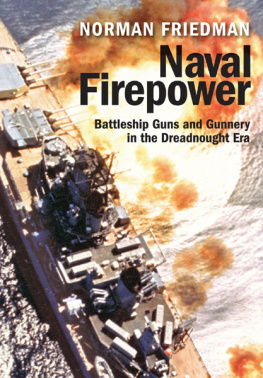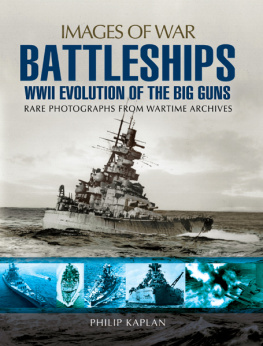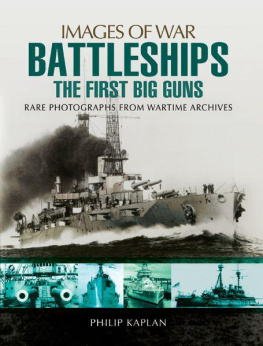
IMAGES
of America
USS ALABAMA

The USS Alabamas bell is now located at the entrance of the visitor center and ships store at USS Alabama Battleship Memorial Park. Visitors to the park are welcome to ring the bell. (Courtesy of Kent Whitaker.)
ON THE COVER: Crew members are seen on board in this aerial photograph of the USS Alabama (BB-60) early on commissioning day, August 16, 1942, at the Norfolk Naval Shipyard. The number three turret is located aft. At the time, the turret, like much of the Alabama, was still under construction. The top armor plating had also yet to be installed. (Courtesy of USS Alabama Battleship Memorial Park.)
IMAGES
of America
USS ALABAMA
Kent Whitaker on behalf of the
USS Alabama Battleship Memorial Park
Foreword by Bill Tunnell

Copyright 2013 by Kent Whitaker on behalf of the USS Alabama Battleship Memorial Park
ISBN 978-1-4671-1021-1
Ebook ISBN 9781439643754
Published by Arcadia Publishing
Charleston, South Carolina
Library of Congress Control Number: 2013930916
For all general information, please contact Arcadia Publishing:
Telephone 843-853-2070
Fax 843-853-0044
E-mail
For customer service and orders:
Toll-Free 1-888-313-2665
Visit us on the Internet at www.arcadiapublishing.com
This book is dedicated to the crew of the USS Alabama and to all who have served this countrypast, present, and future.
CONTENTS
ACKNOWLEDGMENTS
Bill and I would like to acknowledge the people and organizations that made this book possible. It could not have been written without the service of the World War II crew members of the USS Alabama (BB-60). Over the years, they have volunteered time, knowledge, and memories in order to help make Alabamas history as complete as possible.
We would also like to acknowledge the Battleship Commission, the volunteers and fundraisers who brought Alabama home, and the current staff and volunteers of USS Alabama Battleship Memorial Park. They have all worked over the years to preserve her story.
Bill and I would also like to acknowledge Shea McLean, the curator of USS Alabama Battleship Memorial Park, and his staffTodd Kreamer, Brittany Comiskey, Nora Ives, and Chip Dobsonfor their tireless work in telling Alabamas story.
Unless otherwise noted, all photographs in this book are courtesy of the USS Alabama and Battleship Memorial Park.
On a personal note, Bill and I would like to thank our wives, Mary Allyson Nagem Whitaker and Cynthia Gregory Tunnell, as well as our families. Thanks for letting us take the time to tell the story of the ship that means so much to both of us. Lastly, Macee Whitaker: thanks for your service to your country and for riding shotgun with me on all of the military history trips we have taken.
FOREWORD
Welcome to USS Alabama Battleship Memorial Park!
Dedicated to all Americans who have worn the uniform of every branch of the United States Armed Forces, the self-supporting Battleship Memorial Park is anchored by the World War II heroine battleship USS Alabama (BB-60). Although an agency of the state of Alabama, the park has never received any city, county, state, or federal funds for daily operations since its opening in 1965.
The park has been open to the public since January 9, 1965, exactly 18 years from the date of her decommissioning in 1947 in Bremerton, Washington. Some 14 million visitors have graced the decks of the Alabama since that date. The statewide economic impact of her being in Mobile has meant more than $500 million just from admission revenues alone!
Battleship Alabama is the star of the park, although other military artifacts are displayed. They include the submarine USS Drum (SS-228), now Americas oldest existing submarine, and, along with Battleship Alabama, a National Historic Landmark. A total of 28 historic aircraft from the past 80 years are also displayed in the park, along with tanks, memorials, and other artifacts.
Everything about the battleship is big: it is longer than two football fields, had a crew of 2,500 men, and weighs about 90 million pounds or so. Even the park reflects the size of the ship, as 2.9 million cubic yards of Mobile Bay bottom were dredged to create the first 75 acres of the now 155-acre park. And oh yes, her keel is 24 feet below the waters of Mobile Bay.
Author Kent Whitaker has had a relationship with the USS Alabama since his infancy. He will take you on a spellbinding tour from her 1940 inception, through the fiercest of action during World War II, and continue following her trek after retirement to Mobile, where she stands today as a silent tribute to the Greatest Generation, her guns never again to fire in anger.
So please enjoy these images and words as the USS Alabama comes alive in your hands. And, yes, before I forget, come see her for yourself!
Bill Tunnell, Executive Director
INTRODUCTION
The USS Alabama (BB-60) is a World War II South Dakotaclass battleship. She is one of several American military vessels named after the state of Alabama.
USS Alabama and her three sister ships were the second series of battleships named South Dakota class. After World War I, several countries, including the United States, signed treaties that limited the capacity of warships. A 1922 treaty rendered the original South Dakotaclass battleships already under construction obsolete, as they were over the limits set in the agreement. Construction was stopped, and the original ships were scrapped by 1923. The scrapped ships were to be named USS South Dakota (BB-49), USS Indiana (BB-50), USS Montana (BB-51), USS North Carolina (BB-52), USS Iowa (BB-53), and USS Massachusetts (BB-54).
In the 1930s, military leaders realized that there would be a need for updated fast battleships, aircraft carriers, and other naval vessels. A new war was engulfing much of the world. The scrapping of the original South Dakotaclass ships in 1923 allowed naval planners the opportunity to modernize. The South Dakotaclass battleship was brought back to the drawing board, redesigned, and funded. The new line of South Dakotaclass ships borrowed some of the names from the ships scrapped in 1923. The new ships were named the USS South Dakota (BB-57), The USS Indiana (BB-58), the USS Massachusetts (BB-59), and the USS Alabama (BB-60).
The new battleships were more compact and featured nine 16-inch Big Guns in three turrets. This was three fewer Big Guns and one less turret than the original South Dakotas. They also had improved armor and protection below the waterline, and they were faster. All four of the new South Dakotaclass battleships were under construction before the United States entered World War II in 1941 after the bombing of Pearl Harbor. Construction on the South Dakota, Indiana, and Massachusetts all began in 1939. The keel of Alabama, the last of the four, was laid down on February 1, 1940.
The American people were united behind the cause of defeating the Axis powers. Factories around the country switched from making only consumer items to also producing a wide range of materials for the war effort. The same effort to supply the troops took place in American shipyards. The crew building the
Next page














